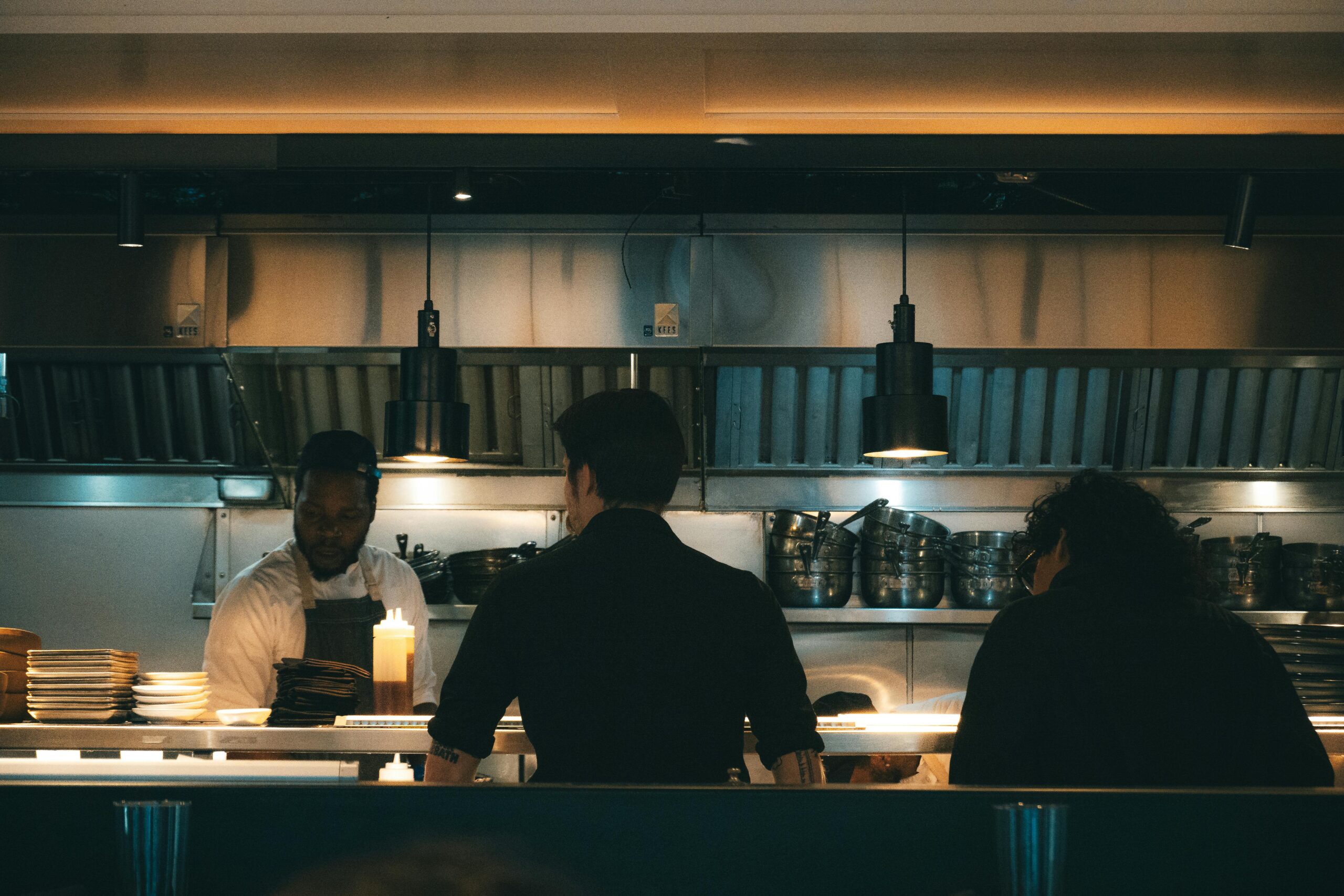Are you choosing between Section 179 vs bonus depreciation based on actual strategy—or just accepting whatever your accountant defaults to?
Most restaurant leaders leave serious money on the table because they treat these tax tools as interchangeable.
They’re not.
Key Takeaways
- Section 179 offers precision control for profitable years, allowing you to deduct up to $2.5 million in equipment purchases but limiting deductions to your taxable income—making it ideal when you want to strategically manage your tax bracket.
- Bonus depreciation handles unlimited spending and can create losses, with 100% deductions available for equipment acquired after January 19, 2025, making it the better choice for multi-location buildouts or expansion years when you’re operating at break-even or a loss.
- Smart restaurant leaders sequence both tools strategically by applying Section 179 first to dial in exact deduction amounts, then using bonus depreciation on remaining purchases—but only after considering state tax conformity, potential property sales within 3 years, and how depreciation impacts other deductions.
- Timing is everything in 2025: Equipment must be both acquired AND placed in service after January 19, 2025, to qualify for 100% bonus depreciation; anything purchased before that date only gets 40%, a difference that can cost tens of thousands in lost deductions.
- The biggest mistake is making these decisions without restaurant-specialized guidance—state conformity rules, depreciation recapture on sales, and coordination with pass-through deductions require expertise that generic accountants simply don’t have.
What Is Section 179?
Section 179 lets you immediately deduct the full purchase price of qualifying equipment and software in the year you buy it, rather than depreciating it over several years.
The One Big Beautiful Bill Act (OBBBA) doubled the deduction limit to $2.5 million for 2025, with a phase-out starting at $4 million in total purchases.
This Section 179 tax benefit for restaurants covers everything from kitchen equipment to point-of-sale systems—but there’s a catch. Your deduction can’t exceed your taxable income for the year. If your restaurant generates $800,000 in profit, that’s your ceiling, even if you spent $2 million on new equipment.
Section 179 for restaurants works best when you have strong profits and want immediate tax relief you can control.
What Is Bonus Depreciation?
Bonus depreciation lets you immediately deduct a percentage of qualifying equipment costs without income limitations.
The OBBBA permanently restored 100% bonus depreciation for assets acquired and placed in service after January 19, 2025. Before this change, restaurant bonus depreciation was phasing down to 40% in 2025 and scheduled to disappear by 2027.
Unlike Section 179, bonus depreciation has no spending cap and can push your taxable income below zero, creating net operating losses you can carry forward. This makes it powerful for large equipment purchases—think complete kitchen overhauls or multi-location buildouts.
The catch?
Qualifying property must meet specific timing requirements, and not all states conform to federal bonus depreciation rules.
When to Use Section 179 for Restaurants
Pull the Section 179 lever when you’re having a profitable year and want immediate, controllable tax relief.
If your restaurant generated $1.2 million in taxable income and you’re buying $800,000 in new equipment, Section 179 lets you zero out most of that profit right now.
It’s also your go-to for equipment that doesn’t qualify for bonus depreciation—certain building improvements, such as HVAC systems, roofing, and security installations, fall into this category.
When to use Section 179 becomes clear when you need strategic control over your deduction timing. You can choose exactly how much to expense rather than taking a mandatory percentage. This precision matters when you’re managing income across multiple entities or planning for specific tax brackets.
Smart restaurant leaders combine this with their accountant’s projections to dial in the perfect deduction amount.
Learn more about maximizing these strategies in our complete guide to restaurant tax benefits.
When to Use Bonus Depreciation for Restaurants
Use bonus depreciation when you’re making large capital investments that exceed Section 179 limits or when you need to create tax losses.
If you’re building out three new locations at $2 million each, bonus depreciation handles that scale without caps. It’s also your only option when you’re operating at a loss—maybe you’re in expansion mode or dealing with a tough year.
Unlike Section 179, bonus depreciation can push your taxable income below zero, creating net operating losses that offset future profits.
The timing matters now more than ever. Equipment acquired and placed in service after January 19, 2025, qualifies for the full 100% deduction. Anything purchased before that date only gets 40%.
When to use bonus depreciation becomes obvious for multi-unit operators planning major renovations or operators buying used equipment that’s new to your business.
State tax conformity also plays a role here—some states that don’t recognize bonus depreciation do allow Section 179, so coordinate with your accounting team on the optimal approach. Check out strategies for reducing your overall tax bill to see how these decisions fit your bigger picture.
Section 179 vs Bonus Depreciation: When To Use Which Tool
The decision between Section 179 vs bonus depreciation isn’t either/or—it’s about sequencing them strategically.
Apply Section 179 first to dial in your exact deduction amount, then let bonus depreciation handle the overflow.
Here’s your decision framework:
- Strong profit year + equipment under $2.5M? Section 179 gives you precision control.
- Loss year or massive capital spend? Bonus depreciation creates NOLs you can carry forward.
- Building improvements like HVAC or roofing? Section 179 is often your only option.
- Multi-location buildout exceeding $4M? Bonus depreciation picks up where Section 179 phases out.
- Planning to sell within 2-3 years? Consider regular depreciation to avoid recapture at ordinary income rates.
The smartest restaurant leaders layer both tools.
For instance, use Section 179 on $2.5 million in kitchen equipment to match this year’s income, then apply 100% bonus depreciation to the remaining $3 million in dining room buildout costs.
This combo approach is exactly what restaurant-specialized accountants help you execute—they understand both your current profitability and your growth trajectory.
For comprehensive guidance, review our ultimate guide to restaurant tax benefits.
Decision Matrix Chart:
| Your Situation | Best Tool | Why |
| Profitable year, purchases under $2.5M | Section 179 | Control exact deduction amount; matches taxable income |
| Operating at a loss or break-even | Bonus Depreciation | Creates NOLs; no income limitation |
| Total equipment spend exceeds $4M | Both (sequenced) | Section 179 first, then bonus depreciation on the remainder |
| HVAC, roofing, security systems | Section 179 | These improvements often don’t qualify for bonus depreciation |
| New kitchen equipment acquired after 1/19/25 | Bonus Depreciation | 100% immediate deduction with no cap |
| Multi-location expansion | Bonus Depreciation | Handles large-scale investments without limits |
| Planning to sell property within 3 years | Regular Depreciation | Avoids recapture at higher ordinary income rates |
Common Mistakes Restaurant Leaders Make With Both
The biggest errors happen when restaurant leaders treat these deductions as last-minute decisions instead of a year-round strategy. Here’s what to avoid:
- Ignoring state tax conformity. Many states don’t follow federal bonus depreciation rules, meaning you could face surprise tax bills at the state level even after maxing out federal deductions. California, New York, and several other states require add-backs that your restaurant-focused CPA should calculate before you commit to large purchases.
- Missing the acquisition date deadline. Equipment purchased before January 19, 2025, only qualifies for 40% bonus depreciation—even if you place it in service after that date. Restaurant leaders who signed contracts in December 2024 for equipment delivered in February 2025 lost 60% of their potential deduction because they didn’t understand the timing rules.
- Planning to sell within three years without considering recapture. If you claim 100% depreciation on qualified improvement property, then sell your location, you’ll pay ordinary income tax rates (up to 37%) on the recaptured depreciation. Regular depreciation over 15 years would have resulted in a maximum 25% rate on that gain—a difference that costs six figures on major buildouts.
- Not coordinating with other tax strategies. Taking maximum depreciation can reduce your qualified business income, potentially limiting your Section 199A pass-through deduction. Your restaurant tax obligations extend beyond equipment purchases, and these decisions need to work together, not against each other.
Review our guide on restaurant tax obligations for the full picture.
Smart Tax Strategy Starts With the Right Partner
Section 179 vs bonus depreciation isn’t about choosing one tool—it’s about knowing when to pull which lever.
The restaurant leaders saving the most money work with CPAs who understand both the tax code and restaurant operations, who can model different scenarios before you sign purchase orders, and who think proactively about your three-year growth plan, not just this year’s return.
Ready to work with someone who speaks your language? Get matched with a restaurant-specialized CPA who can help you make these strategic decisions.



